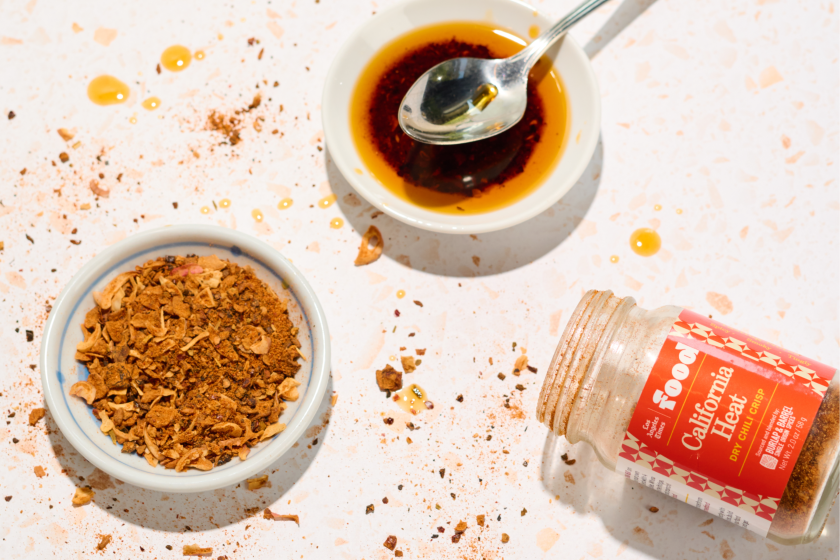French Salad Dressing

In the early ‘80s, curious why so many foreign tourists wanted to see California (gosh, this old place?), I read a snooty French guidebook to our state. It scorned literally everything about us except our movies and the Laws Railroad Museum near Bishop.
Not least our food. Our steaks were revoltingly large, the French author groused. Our crepes were way too thick, and we put maple syrup on them. And our “French dressing” wasn’t French at all!
I agreed with the last part, but it didn’t strike me as much of a criticism. I’ve always loved the reddish American “French” dressing, which is basically a French vinaigrette sauce punched up with tomato ketchup (sometimes tomato soup) and other flavorings such as Worcestershire sauce, garlic and sugar.
Like the guidebook author, most American foodies have despised French dressing, but they’ve had to come up with more respectable-sounding reasons than mere insufficient Frenchness. Sometimes they say it’s too sweet, though you don’t hear them denouncing balsamic vinegar. Or that it’s blunt and coarse--unlike wine vinegar, I suppose.
The main complaint is that it overpowers delicate greens, presumably because of the tomato content--but on that ground, tomatoes should never be allowed in salad. And when it comes to overpowering flavors, blue cheese dressing is strongish, to say nothing of Asian dressings such as the peanut-based gado gado sauce of Indonesia.
So it really just comes down to the ketchup. It’s a snob thing. Foodies think ketchup is low-class.
A better way to look at French dressing is as a cousin of barbecue sauce (in fact, it has sometimes been used as a barbecue sauce). It’s lighter, because salad vegetables are milder than meat, but it shows the same American taste for a big, mouth-filling sauce full of sweet, sour, spicy and aromatic flavors on a rich, long-cooked tomato base. Like barbecue sauce, it has a lot of personal variations. Many cooks cherish a secret ingredient such as tarragon, mustard, chili powder, horseradish, minced onions or chopped celery.
Its origins are as obscure as any folk recipe’s. In 19th century books such as “The White House Cookbook” (1887) and Fanny Farmer’s “Boston Cooking-School Cook Book” (1896), “French dressing” always meant oil and vinegar. Quite a few 20th century books have continued that tradition.
But “Mrs. Rorer’s New Cook Book” (1902) mentioned that you could vary vinaigrette with Worcestershire sauce, onion juice or ketchup--only not all at once, Sara Tyson Rorer warned. (Oddly, she gave an “Italian” dressing that was a vinaigrette with garlic and a teaspoon of ketchup in it.)
Too late. Already Americans out in the heartland were violating Mrs. Rorer’s principles. “Los Angeles Times Cookbook Number Four” (1911) gave a “Kentucky dressing” that contained every flavoring but ketchup: garlic, mustard, Worcestershire, brown sugar and red pepper.
As the century progressed, the tomato element became prominent. In 1916, Janet McKenzie Hill, the editor of Boston Cooking School Magazine, “Practical Cooking and Serving,” suggesting mixing chili sauce into French dressing “to make the dressing of the consistency of thick cream.”
And then the 1923 edition of Fanny Farmer gave a recipe for “Ohio Salad Dressing” which included ketchup, Worcestershire sauce, mustard, sugar and Tabasco--every usual flavoring but garlic.
French dressing has never enjoyed the cult status of barbecue sauce, but it shows almost as much variation. And it’s more vigorous than you might think. People are still devising their own versions, often using Dijon mustard or olive oil for a more contemporary taste. The following recipes from the 1920s show the concept just as it was beginning to bloom.
Combine oil, vinegar, ketchup, salt, chili powder, dash pepper, dash paprika, Worcestershire and sugar. Stir vigorously or shake in lidded container to mix.
Get our Cooking newsletter.
Your roundup of inspiring recipes and kitchen tricks.
You may occasionally receive promotional content from the Los Angeles Times.















